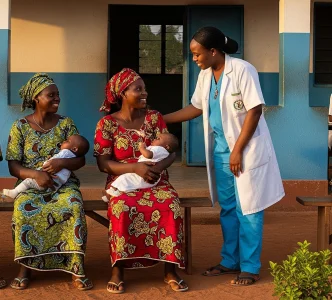
Leukaemia treatment in Nigeria is a complex endeavour, influenced by the type of leukaemia, patient demographics, and the healthcare infrastructure. This guide explores the treatment landscape in Nigeria, highlighting available options and challenges faced by patients and healthcare providers.
Overview of Leukemia Treatments
Treatment for leukaemia in Nigeria varies based on several factors, including the type of leukaemia, the patient's age, overall health, and the disease's progression. Common treatments are chemotherapy, targeted therapy, radiation therapy, bone marrow transplant, and immunotherapy.
Chemotherapy
Chemotherapy remains a primary treatment for leukaemia. However, the availability of chemotherapy drugs in Nigeria is limited, with access being more prevalent in urban areas. This limitation poses a challenge, especially for patients in rural regions.
Targeted Therapy
Targeted therapies, which focus on specific abnormalities in cancer cells, are emerging in Nigeria. These therapies offer a potential for less toxic treatment but are hindered by the need for particular diagnostics, which are not widely available in Nigeria.
Radiation Therapy
Radiation therapy is crucial for certain types of leukaemia. In Nigeria, fewer than nine functional radiotherapy machines exist for a population of over 191 million, leading to higher treatment costs and limited accessibility. This scarcity significantly affects the country's availability and cost of radiation therapy.
Bone Marrow Transplant
Bone marrow transplantation, an essential treatment for many leukaemia types, is extremely limited in Nigeria. Facilities for such advanced treatment are scarce, and the cost is prohibitively high for most patients.
Immunotherapy and CAR-T Cell Therapy
These advanced therapies represent significant progress in leukaemia treatment. However, they are new to the Nigerian medical scene and are not widely available. Access to such therapies is often costly and limited to a few centres.
Access to Blood Components
Access to essential blood components like platelet apheresis is limited, with only 10% of clinicians having access. This limitation impacts the effectiveness of treatments like chemotherapy, which require robust supportive care.
Clinical Trials
Clinical trials for new leukaemia treatments are scarce in Nigeria. Patients often lack access to these trials, which can provide opportunities for cutting-edge therapies.
Challenges in Leukemia Treatment
The management of leukaemia in Nigeria faces significant challenges. These include the high cost of drugs, the absence of specialized laboratories for diagnostics, and the need for more necessary supportive care. The lack of adequate blood components and the reluctance to administer total chemotherapy doses further hinder effective treatment.
Improving Access
Efforts are being made to improve access to cancer treatments in Nigeria. For example, initiatives like the Marjorie Bash Cancer Centre aim to provide affordable cancer treatment in the Niger Delta region within the next 18 months, starting with services like cryotherapy for cervical pathology.
Conclusion
The treatment landscape for leukaemia in Nigeria is evolving, with gradual improvements in accessibility and quality of care. However, challenges remain, particularly in the availability and affordability of advanced treatments. Collaboration between healthcare providers, government, and international partners is crucial for enhancing leukaemia care in Nigeria.




